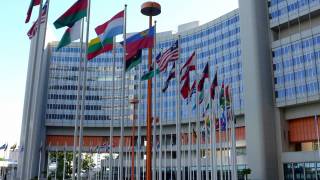Shingrix Vaccine Approaches FDA Approval

An advisory panel from the Food and Drug Administration (FDA) unanimously voted that GlaxoSmithKline’s (GSK) shingles vaccine Shingrix warrants approval.
The FDA is not required to follow the advice of its advisory panels.
This FDA panel held an open meeting in Atlanta, Georgia at the Centers for Disease Control and Prevention (CDC). The data were presented at the CDC’s Advisory Committee on Immunization Practices (ACIP) meeting Wednesday, September 13, 2017.
The ACIP panel stated during various presentations that the safety and efficacy of Shingrix merited a positive FDA review for its use in US adults aged 50 and over.
Panel members said Shingrix, a non-live, recombinant subunit vaccine, represents an improvement over Zostavax, the shingles prevention vaccine currently produced and marketed by Merck & Co.
Zostavax is the only shingles vaccine currently available in the US. It is available by prescription from a healthcare professional, and is available at most pharmacies.
According to the FDA, almost 1 out of 3 people in the US will develop shingles during their lifetime. Shingles cannot be passed from one person to another.
And your risk increases as you get older. About half of all shingles cases occur in people age 60 years or older.
Nearly 1 million Americans experience shingles each year.
The FDA encourages patients to speak with your doctor or pharmacist if you have questions about shingles or vaccines.
Most seniors know that shingles causes a painful, blistering skin rash.
People have described pain from shingles as excruciating, aching, burning, stabbing, and shock-like. This pain may also lead to depression, anxiety, difficulty concentrating, loss of appetite, and weight loss.
A recent study explained why patients with shingles feel pain.
One of the first and most unpleasant symptoms of shingles is neuralgia, or constant intense pain affecting mainly the nerves of the chest but also the neck, the trigeminal nerve in the face, and the lower back.
The pain may be accompanied by paresthesia, which is a feeling of pins and needles, tingling, pricking, itching, numbness, burning and/or cold.
The immune mechanism is triggered by the virus when it is reactivated, changing the way that sensory neurons work and resulting in herpetic neuralgia.
Researchers affiliated with the University of São Paulo (USP) in an article published in The Journal of Neuroscience, said “that their discoveries lay a foundation for novel treatments not only to combat acute pain but also to prevent it from becoming chronic, a condition known as post-herpetic neuralgia.’
This investigation was conducted under the aegis of the Center for Research on Inflammatory Diseases (CRID), one of the Research, Innovation and Dissemination Centers funded by the São Paulo Research Foundation (FAPESP).
Vaccine discounts can be found here.
Our Trust Standards: Medical Advisory Committee

























